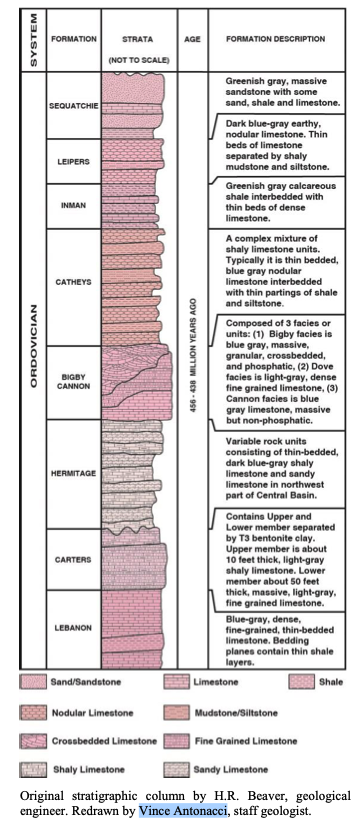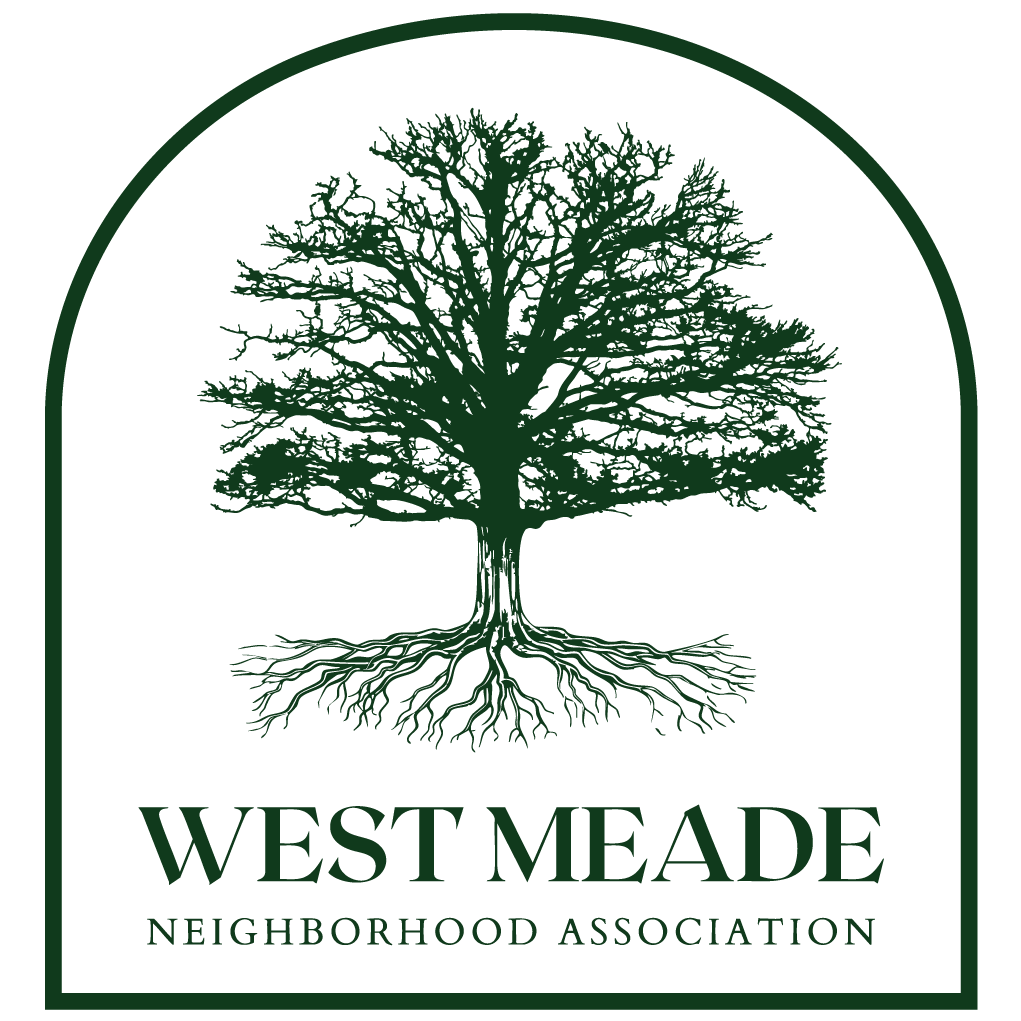On November 28, there was a meeting held at the Vulcan Materials plant on River Road. Attendees included Paul Garland, Sheryl Garland, Councilman Thom Druffel and representatives from Vulcan Materials, including the VP, Permitting and External Relations, the Plant Manager, the Plant Supervisor and the Manager of Community and Government Relations. The topic was the increasing intensity of blasts, and the possibility of damage to residents due to blasting.
Vulcan Materials’ position is that the regulation of 2.0 inches/second is a requirement that was derived based on the strength of housing materials – in particular, plaster wallboard. They pointed out that this is a national standard, and that they are consistently well below that reading. They did concede that the vibrations do not dissipate in the concentric method that water ripples in a pond, and that the limestone/shale rocks beneath us, as well as the amount of soil, and other factors determine how the blast is felt by residents. They reiterated that their blasting cannot damage homes, and that foundation and wall cracks could be natural.
They also relayed that they felt there was no basis in the idea that there would be a cumulative effect to foundations over 40 years of monthly blasting. The VP proceeded to rebut some information that we received from various sources, and we indicated that a release of the seismic readings would help clear up the conflict.
The plant shoots (blasts) in 3 benches, which are identified by the strata of rock in the Ordovician System. Specifically, they extract rock from the Bigby Cannon, Hermitage and Carters formations (benches). The biggest, Bigby Cannon, produces the best limestone.

Our position that was conveyed is that their explanations aside, there are residents in West Meade and Hillwood, some for over 40 years, that have experienced more intense blasts this year than they have felt in any preceding year, and that many residents feel like the blasts are having an impact on their foundations and walls. We also pointed out that we have had discussions with geologists with experience on the impact of continued explosives on concrete, rock and natural materials, and they felt that there would most likely be a cumulative negative impact on building materials caused by monthly blasting over years.
We also posited that the maximum vibration requirement might not be appropriate for a neighborhood that contains 60+ year old houses and might need to be readdressed. The origin of the 1975 regulation is still vague, but the Vulcan VP indicated that the requirement is a federal one. (The Tennessee Fire Marshal indicated that it came from the Bureau of Alcohol, Tobacco, Firearms and Explosives. However, we talked to a special agent from ATF who said it did not come from them.)
We mentioned that we are considering obtaining a simulation of the blasting, to ascertain whether the years of blasting have impacted our homes. They said such a simulation has been done, and that it would be very expensive. We were referred to the U.S. Bureau of Mines for more information. We told them we would welcome their assistance with securing the right resources that would be able to perform a geological simulation and determine the associated costs of testing. Since their blasting is well within the Tennessee State regulations, they should have no reservations in helping. We also suggested that they could set up monitoring stations throughout the neighborhoods.
Thom said it best when he told them, “Perception becomes reality, and Vulcan needs to come up with some way to make the intense blasting stop” or our residents will not stop complaining and may begin to pursue other avenues of recourse.
My general feeling is that Vulcan Materials feels that they are doing what they can, and keeping within the state requirements, and that they are convinced that their blasting is not causing damage to residents’ homes. Their expertise is appreciated, but since they are Vulcan employees, their opinions are naturally biased. Thus I feel it is incumbent on WMNA, as good stewards of the neighborhood, to do as Ronald Regan would do – “trust, but verify” – and continue to research the possibility that neighborhood homes have sustained damage from years of blasting.
In the 1980s, the technique of Total Quality Management included a teaching tool called the Lettuce and Tomato Rule. A diner at a restaurant told his waiter that he wanted the hamburger, but without the lettuce and tomato. The waiter, knowing the chef always insists on putting lettuce and tomato on the hamburger, did not convey this to the chef. When the hamburgers were cooked, the waiter stealthily picked the lettuce and tomato off the one diner’s hamburger and threw them into the garbage. The rule had become so embedded that anything different was considered heretical.
The 2.0 in/sec particle velocity regulation is based on an 84 page paper1 written 40 years ago by engineers from the Bureau of Mines, which was disbanded in 1996. Legislators, State Fire Marshals, Quarry managers, and Tennessee state employees all cite the regulation much like a chef’s insistence that every hamburger must have lettuce and tomato, even as the foundations and walls of people’s homes are possibly crumbling around them. The rule becomes the reality, and the reality becomes homeowners’ imagination. Perhaps it is time to insist that the regulations are outdated, never considered ageing homes, and could be indirectly (through blind adherence, as in the lettuce and tomato rule) the result of million-dollar investments losing value (the paper uses the words “residences” and “structures” instead of “homes” quite purposefully).
Consider, also, that we are now living in the age of social consciousness and environmental responsibility. There are laws and understandings today that we would never have imagined 20 (much less 40) years ago. A home represents so much more of a person’s net worth now than it did in the 80s. We have gained, by leaps and bounds, more knowledge about our environment, and become more sensitive to the health and welfare of individuals and the treatment of citizens by the government and commercial entities. Perhaps it is time to consider this aspect of our living arrangement with commerce that operates close enough to impact our homes and neighborhoods. Also, technologically, we have more tools that we can rely upon to do a more accurate research and analysis than in the 80s, like faster computers, more advances in material science and geology, and, of course, Large Language Model AI systems (more about this in a later post).
Lastly, I leave you with the second paragraph in the Introduction of the Report of Investigations 8507.
Pennsylvania was the first State to adopt the 2.0-in/sec peak particle velocity criterion as a safe standard in 1957. However, in 1974 it was forced to adopt stricter controls because of citizen pressure and lawsuits involving both annoyance and alleged damage to residences. There existed no technologically based and supportable criteria for mine, quarry, and construction blasting other than the 2.0-in/sec criteria from Bulletin 656 and RI 5968. The general growth of mining, the proximity of mining and quarrying to their residential neighbors, and greater environmental awareness have all required reexamination of blasting regulations and justified further research.
- Report of Investigations 8507 : Structure Response and Damage Produced by Ground Vibration From Surface Mine Blasting, D.E. Siskind, M.S. Stagg, J.W. Kopp, C.H.Dowding – 1983 https://vibrationmonitoringcourse.com/wp-content/uploads/sites/7/2014/03/RI-8507-Blasting-Vibration-1989-Org-Scanned-Doc.pdf ↩︎
